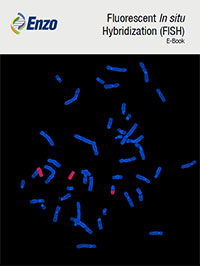Renal cell carcinoma (RCC) is the most common type of kidney cancer in adults, responsible for approximately 90–95% of cases. The American Cancer Society’s estimates for kidney cancer in the United States are that about 62,700 new cases of kidney cancer (39,650 in men and 23,050 in women) occurred and that 14,240 people (9,240 men and 5,000 women) died from this disease in 2016. Kidney cancer is among the 10 most common cancers in both men and women. Overall, the lifetime risk for developing kidney cancer is about 1.6 % and this risk is higher in men than in women. Interestingly, kidney cancer is very uncommon in people aged below 45 with the average diagnostic age being 64. It is also noteworthy that the rate of new kidney cancers has been rising since the 1990s with little improvement on the development of successful treatments. RCC encompasses a heterogeneous group of tumors that is mainly categorized based on unique histopathological features. Major subtypes are clear cell RCC (ccRCC, ~75 %), papillary RCC (pRCC, ~15 %) and chromophobe RCC (chRCC, ~5%). Although RCC with unclassified histology (uRCC) constitute a significant portion of aggressive non-clear cell RCC (4–5 %), there is no standard therapy available yet and uRCC still presents a substantial diagnostic and management challenge as the largest molecularly uncharacterized RCC category with unknown oncogenic pathways as of to date.
Nick Translation
One of the most important methods deployed today to analyze genetic aberrations for classifying and diagnosing tumor subsets such as in uRCC is fluorescence
in situ hybridization (FISH) using probes that are generated by nick translation. Nick translation was the first method ever devised for the
in vitro labeling of DNA and has become a gold standard technique for the generation of sensitive, inexpensive and highly customizable probes in molecular biology. It is especially recommended for labeling of double stranded DNA larger than 1 kb for FISH. During the reaction, the DNA to be labeled is nicked by DNase I yielding a free 3′ hydroxyl end. DNA polymerase I then adds a new nucleotide to this end. The 5′-3′ exonuclease activity of the polymerase then moves the “nick” along the strand in the 3′ direction. The addition of a fluorescently or otherwise labeled nucleotide to the reaction results in probes that can be used in hybridization reactions to whole cells and tissue samples as well as DNA immobilized on Southern blots, colony lifts, etc.
uRCC Classification
In a recent study,
Ying-Bei Chen and colleagues from the Memorial Sloan Kettering Cancer Center in New York, analyzed a cohort of 62 uRCC primary tumors by an integrated and step-wise approach, combining targeted cancer gene sequencing, RNA sequencing, single-nucleotide polymorphism (SNP) arrays, FISH, immunohistochemistry, and cell-based assays. Deploying a targeted next generation sequencing platform specific for all exons and selected introns of 230 oncogenes, tumor suppressor genes, and members of pathways deemed actionable by targeted therapies, they identified 29 recurrently mutated genes with
NF2 (18 %),
SETD2 (18 %) and
BAP1 (13 %) being the three most frequently mutated genes. To further assess the
NF2 status in uRCC, the authors of this study thoroughly analyzed chromosome 22q12 where
NF2 resides and found that based on copy-number plots generated by the sequencing, 22q12 loss was evident in 14 cases (23%), among which 9 also carried
NF2 mutations. This hemizygous 22q12 loss could be confirmed in all 14 cases by applying nick translated FISH probes that had been labeled with
fluorochrome-conjugated dUTPs from Enzo. In addition to the
NF2 loss, this uRCC subset showed dysregulated Hippo-YAP signaling, enrichment of
SETD2 mutations, frequent 1p and 3p losses, aberrant histone methylation, and aggressive clinical behavior. Ying-Bei Chen and colleagues were also able to denote other uRCC subsets such as those characterized by mTORC1 hyperactivity and FH deficiency. In conclusion, this study yielded molecularly distinct subsets accounting for about 76% of the uRCC cohort cases investigated and uncovered unique oncogenic pathways to uRCC, which could have important future diagnostic, pathogenic and therapeutic implications for rare kidney cancer patients.
From our
fluorescently-labeled dUTPs and nick translation system for preparing FISH probes to our large
in situ hybridization and
microarray labeling portfolio, Enzo Life Sciences provides a complete set of genomic tools, some of which are described below.











